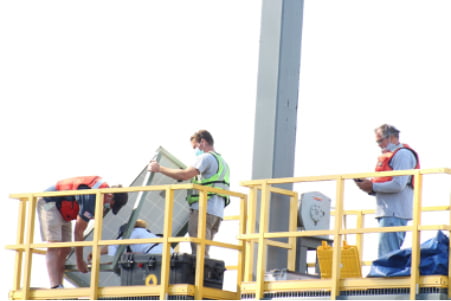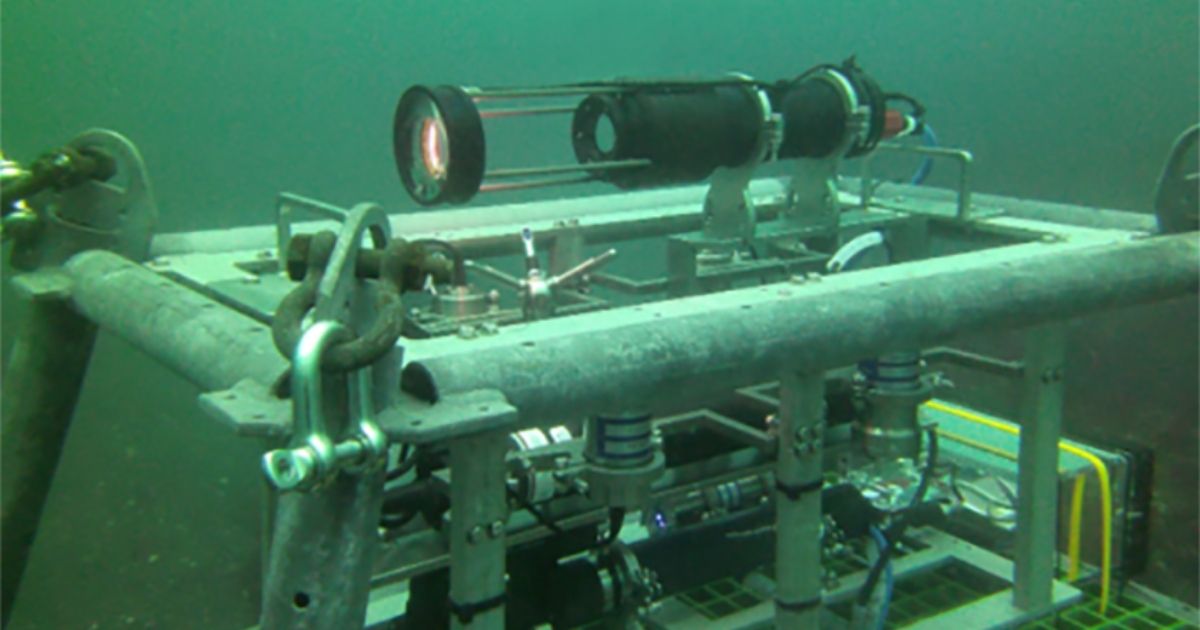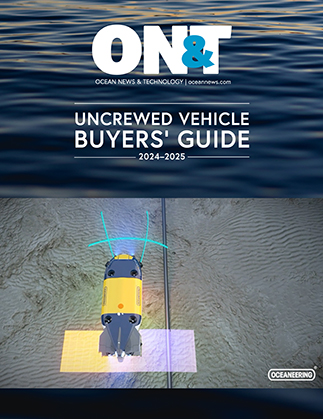Last week, the team installed the communications and battery system on the platform. In order to load the CPICS sensor, the lifting arm had to be powered by a larger generator, which was not on hand. Tomorrow, there will be two generators to lift the arm. In the future they wish to have funding to tie the platform directly to shore power which would simplify operations of this sort.
 The system is being installed at the BTTS to take optical samples of the water to identify, quantify and characterize species of phytoplankton and zooplankton and possible microplastics that are flowing through the canal. Once installed, the sensor will be on the test structure for up to a year. Data will be aggregated at the BTTS and transmitted in near real time. It will then be available on the Coastal Ocean Vision website.
The system is being installed at the BTTS to take optical samples of the water to identify, quantify and characterize species of phytoplankton and zooplankton and possible microplastics that are flowing through the canal. Once installed, the sensor will be on the test structure for up to a year. Data will be aggregated at the BTTS and transmitted in near real time. It will then be available on the Coastal Ocean Vision website.
The Bourne Test Site provides an accessible but secure site for testing sensors. The Blue Economy, from aquaculture to offshore wind turbines, is dependent on a wide variety of sensors to operate efficiently in the ocean’s harsh environment and to ensure environmental impacts are minimized. Currently, Representative David Vieira and the Falmouth Economic Industrial and Development Corporation are assisting in securing funding to upgrade the site to provide broadband from OpenCape to allow testing of multiple sensors continuously. MRECo is also seeking funding from the state to power the platform with a grid connection; which would eliminate the need to bring generators out to the platform.
This installation is part of a project that Gallager has to quantify and characterize plankton community structure at the BTTS and to track microplastics coming from the Deer Island Sewerage Treatment plant located in Boston Harbor as they transit the canal and make their way into Buzzards Bay. NOAA Sea Grant is funding the project to better understand the retention efficiency of microplastics by waste water treatment facilities. An added bonus is that future versions of CPICS of the sensor will be able to detect and classify Harmful Algal Bloom Species that cause the red tide.
This project has been delayed significantly due to the fact that MRECo has not had access to broadband data communications at the BTTS. Now there is better access via a low-power, high-speed WiFi/cellular data transmission system developed by piRShared, a Buzzards Bay high-tech startup company focused on Internet of Things (IoT) environmental monitoring, STEM education and low-power data transmission for remote locations.

